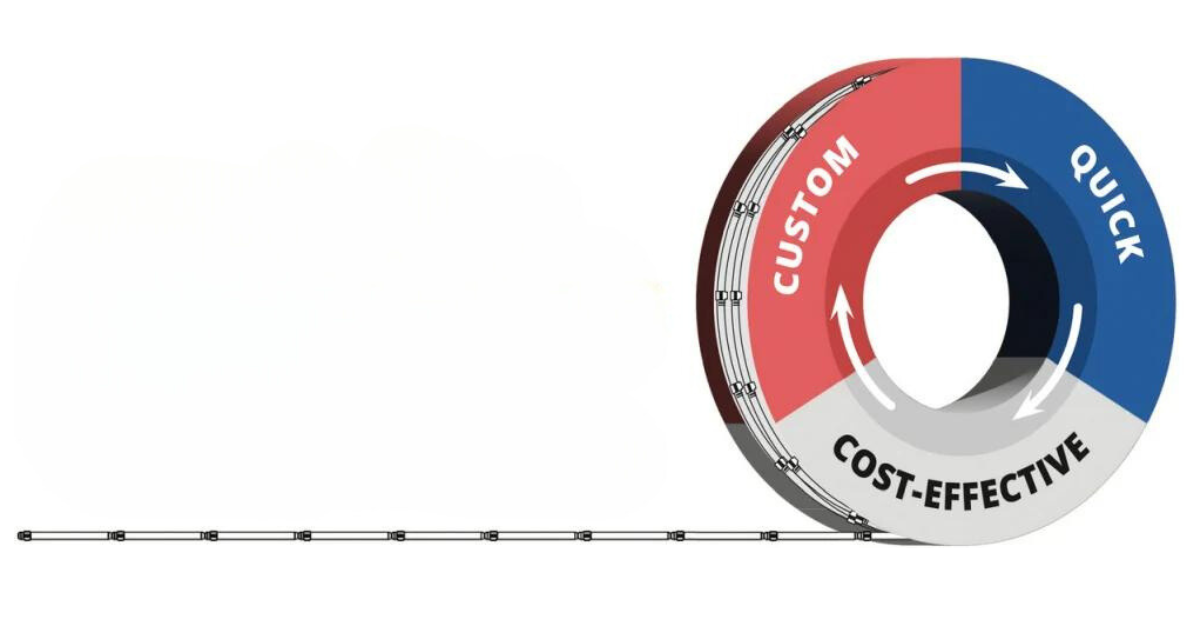What is Swaging?
Swaging is a cold-forming process that begins with a continuous metal strip being pulled through a precision-engineered draw die to create a seamed tube. The tube is then reduced in diameter through a series of progressive forming cavities before being cut into individual components. This high-speed, near-scraps-free method involves shaping metal rather than removing it, making it ideal for producing small, tubular metal parts that are consistent in size and cost-effective. Swaging is versatile and can be used with round or square wire, as well as with loose or continuous wire pins. It’s especially popular for creating lightweight and durable components in large quantities.Key Benefits of Swaging:
- Cost-effective and fast
- Highly scalable and repeatable
- Uses less material, reducing waste

What is Machining?
Machining involves feeding metal rods into a turning press to produce individual interconnect pins and contacts. This process typically generates a significant amount of metal scrap, which increases the overall production cost. While machining offers greater flexibility in design, it often requires more time and resources, especially when working with complex shapes.Key Benefits of Machining:
- Versatile for complex designs
- Capable of achieving tight tolerances
- Good for custom or one-off parts
Swaging vs Machining: A Comparison
When choosing between swaging and machining, consider the following factors:Cost Efficiency: Swaging is generally more cost-effective, especially for high-volume production, due to its low material waste and fast cycle times. Machining, on the other hand, tends to be more expensive because of higher material loss and longer production cycles.
Material Usage: Swaging minimizes material waste by compressing and shaping the metal, while machining often involves cutting away excess material. This can lead to significant savings—up to 40-80% in some cases—depending on the material used.
Precision and Tolerances: Both methods can achieve high precision, but swaging is better suited for simpler geometries. Machining, however, excels when tight tolerances and intricate designs are required.
Durability and Strength: Swaged parts benefit from cold-working, which enhances their strength. Machined parts rely more on the inherent properties of the base material.
When to Use Swaging
- For reducing rods, wires, and tubes
- When remodeling existing products
- For sizing and shaping new components
- When lighter components are needed
- In high-volume production scenarios
- For projects with tight timelines or budgets
- For PCB applications
When to Use Machining
- For complex geometries
- For custom parts with tight tolerances
- During prototyping phases
- When heavier components are required
Why Bead Uses Swaging
Bead Electronics has been utilizing swaging to manufacture custom pins since 1920. This innovative approach to an age-old process offers numerous benefits, including high-quality, high-precision pins at a fraction of the cost of machined alternatives. For example, our hollow pins can weigh up to 63% less than solid machined pins while maintaining identical mechanical and electrical performance. With over 100 years of experience, Bead continues to refine and perfect our swaging techniques. Learn more about how we’ve been manufacturing reliable and cost-effective electronic pins for decades.This sifter machines are applicable to grade of dry powder granules materials in pharmaceutics, chemical industry, foodstuff industry, etc. The screening machine consists of the vertical vibrating motor, a sieve bottom, a mesh frame, screening room, the rubber vibrating bowl. This machine can be used for single layer or multiple layers grading.Compact structure, convenient operations and maintenances, stable running, low noise, large quantities of materials-treating, good fineness, strong applicability, etc.
Sifter Machine,Screening Machine,Sieving Machine,Vibrating Screener
JIANGYIN CITY XUAN TENG MACHINERY EQUIPMENT CO.,LTD , https://www.xuantengmixer.com